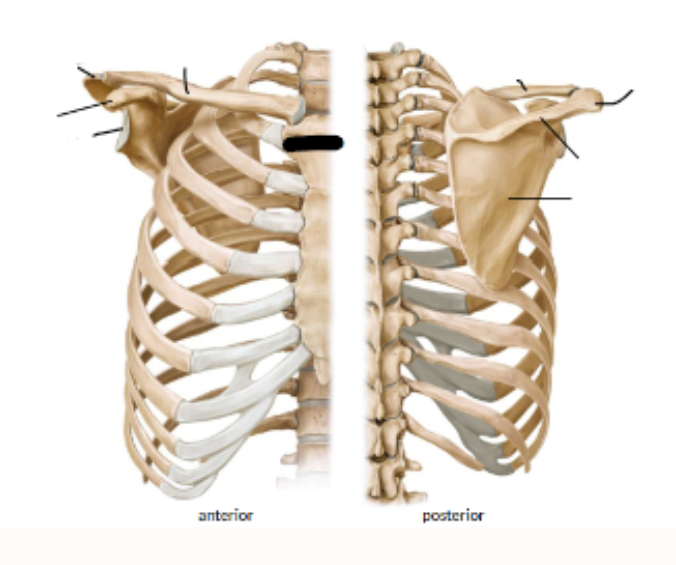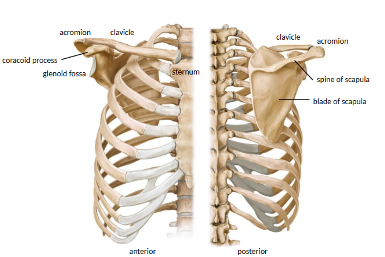Anatomy Lesson 17-MSK Brachial Plexus and Pectoral Girdle
1/11
There's no tags or description
Looks like no tags are added yet.
Name | Mastery | Learn | Test | Matching | Spaced |
|---|
No study sessions yet.
12 Terms
Spinal Levels of Brachial Plexus
C5-T1
What is the interscalene triangle?
The anterior and middle scalene muscles attach to the first rib to form the interscalene triangle
This triangle is where the brachial plexus passes through
What are some complications that can arise in the interscalene triangle (3)?
-Scalene Hypertrophy
-Supernumerary Rib
-Subclavian Artery Compression
Scalene Hypertrophy
If the anterior and/or middle scalene muscles get too large (due to respiratory issues or steroids), they can impinge the upper roots of the brachial plexus leading to loss of motor movement in the proximal limb structures
Supernumerary Rib
An extra rib above the first rib. This causes the floor of the interscalene triangle to rise which leads to impingement of lower roots of the brachial plexus leading to loss of motor movement in distal limb structures
Subclavian Artery Compression
Can be caused by a supernumerary rib or hyperabduction syndrome. It can cause motor and sensory loss to the arm
Damage to upper roots vs lower roots vs vascular issue
Upper Roots: Motor loss to proximal areas
Lower Roots: Motor loss to distal areas
Vascular Issue: Motor and sensory loss to whole arm
Saturday Night Palsy
Compression of the radial nerve leading to wrist drop. Sensory loss in the radial section
Hyperabduction Syndrome
When your arm is hyperabducted, the head of the humerus compresses the brachial plexus and axillary artery and vein. This causes temporary motor and sensory loss
Erbs Palsy
Damage to the upper roots of the brachial plexus. Can be a result of improper childbirth in which a child’s head is pulled as their shoulders come out leading to brachial plexus damage. Leads to proximal motor issues
Klumpke’s Palsy
Damage to the lower roots of the brachial plexus. Can be a result of hyperabduction of the arm. Leads to distal motor issues

